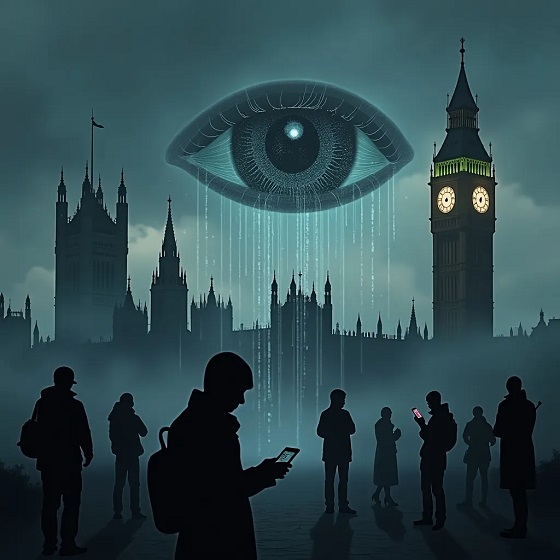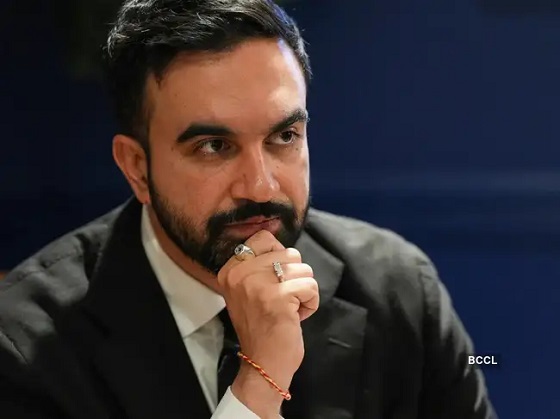Opinion
Britain’s Collapse Is Coming—How Long Until Canada Joins Them?

The Audit
The UK is said to be in some trouble these days. Assessing the extent of the trouble might depend on who you ask. The pessimists insist that the country’s on the very brink of economic and social collapse.
The scent of chaos is strong and I’m sure having Keir Starmer in charge isn’t helping. Watching his face as he speaks leaves me with the distinct impression that the poor fellow is convinced that if he doesn’t say just the right words his blackmailers will do unspeakable things to his wife and children. At least that would explain the complete disconnect between his words and policies vs reality.
Personally, I’m not following developments that closely. I haven’t actually set foot in the UK for more than 40 years – and even then I don’t remember feeling all that welcome. But I am curious to know whether Canada’s own economic and social policies are driving us towards a similar dark fate.
This article by someone calling himself Mr. Star does a good job defining the pessimists’ perspective on the UK. Here’s a brief summary:
Fiscal & Economic Issues
- Triple-lock pensions drive unsustainable spending.
- Expensive welfare schemes (free cars for the disabled, disability benefits, social housing for foreign-born).
- NHS labeled inefficient and costly.
- ~$202B budget deficit projected for FY 2025.
- Wealthy individuals and companies leaving due to high taxes and uncertainty.
- Court rulings on “equal pay” destabilizing service sectors and bankrupting councils.
- Heavy debt burden; 25% inflation-linked, high interest costs from COVID-era QE.
- Economic stagnation; immigration used as a substitute for investment/productivity.
Immigration & Social Cohesion
- Large-scale legal and illegal immigration (small boat crisis).
- Grooming gang scandals and alleged cover-ups.
- Violent gang culture tied to migrant demographics.
- Frequent protests, riots, and rising racial/political polarization.
- Left-wing populist and Green-Islamist coalitions emerging in urban areas.
Social Inequality
- Severe North–South economic divide.
- Rising wealth inequality and eroded upward mobility.
- Housing affordability crisis.
Political & Institutional Dysfunction
- Weak governance and corruption in Westminster and Whitehall.
- Watchdogs (OBR) accused of misleading reporting.
- Bureaucracy focused on political cover-ups.
- No effective leadership or clear national vision; parties seen as inept.
I can’t confirm all of those claims, but they do give us a starting point for a conversation. Let’s see how Canada is currently holding up against such threats.
Canada certainly faces growing budget deficits, plenty of debt maintenance costs, and significant entitlement spending commitments. But those are nothing like the “triple-lock” pension payments and “quantitative easement” fallout that are hitting the UK. And our CPP is still actuarially sound.
It’s certainly true that recent second quarter GDP numbers here in Canada paint a grim picture of a contracting economy. But the UK’s general stagnation and evidence of an exodus of high-wealth citizens are in a league of their own. And so far at least, Canadian courts haven’t given us anything like the heavy handed wage controls that are so crippling for UK employers – both public and private.
The social pressures created by Britain’s high immigration rates (one percent per year) are scary. But Canada’s rate is probably even higher – although nearly all of that immigration is legal. The real tension in both countries is caused by the inexplicable fact that while public sentiment clearly prefers reductions in immigration rates, governments – the odd empty promise notwithstanding – seem determined to open the valves as wide as they’ll go.
For whatever it’s worth, institutional trust feels marginally higher here compared to what I’m hearing from the UK. But we’re still ruled by a federal party that was apparently preferred by only 29 percent of eligible voters. That’s hardly a ringing endorsement. Although it’s also hardly unique in the historical scheme of things.
Regional inequality (compare London vs the rest of the country to Ontario and Quebec vs Alberta) and urban housing affordability are pretty much equally destabilizing in both countries.
One area where things clearly haven’t deteriorated so badly here as in the UK is free speech. Last April, the Times of London reported that British police were arresting more than 30 people a day (that’s 12,000 a year) for “offensive” social media posts. There may be political forces in Canada pushing for this kind of totalitarian overreach, but they thankfully haven’t yet succeeded to that extent.
All that adds up to my tentative conclusion that Canada isn’t necessarily circling the same drain as the UK. We’re still in a position where turning things around is possible even in the absence of miraculous intervention.
Perhaps there’s hope.
Subscribe to The Audit.
For the full experience, upgrade your subscription.
Do you have colleagues or friends who might appreciate this?
Why not share the wealth:
armed forces
Why we keep getting Remembrance Day wrong
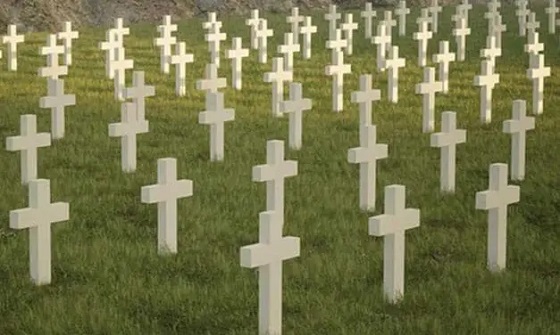
This article supplied by Troy Media.
 By Pat Murphy
By Pat Murphy
Remembrance Day once honoured soldiers for their courage and conviction, but the values they fought for have long since been rejected
With the untimely death of Tim Cook on Oct. 25, Canada lost a valued historian. Military history was Cook’s oeuvre, and the First World War was a particular specialty. His ability to marry academic rigour with accessible storytelling made him a relatively rare bird.
Naturally, Cook wrote about battles, military commanders and political leaders. But he was also fascinated with ordinary soldiers, scouring the archives for personal letters from the front and other material to develop an understanding of what
motivated the soldiers and how they managed the day-to-day horrors of prolonged trench warfare in an environment characterized by cold, mud, lice and rats, not to mention the ever-present spectre of violent death.
Camaraderie was critical. To quote from an interview with Cook: “one of the ways they cope is to create their own tribe, their own group that is insulated from everyone else.”
All of which brings us to Remembrance Day.
Although formally recognized as “remembrance for the men and women who have served, and continue to serve our country during times of war, conflict and peace,” both the origins and iconography of Remembrance Day relate to the First World War. There’s the two-minute silence at the 11th hour of the 11th day of the 11th month to observe the formal end of hostilities in 1918; the playing of the Last Post; and, of course, the ubiquitous red poppies.
The conflict wasn’t post Confederation Canada’s first military endeavour, but its scale dwarfed anything that came before it, and only the subsequent Second World War was a comparable event. Some 620,000 Canadians served between 1914 and 1918 and approximately 60,000 were killed. To get a sense of scale, adjust the fatalities for population growth and it would be comfortably north of 300,000 today.
In War: How Conflict Shaped Us, Margaret MacMillan notes the long history of cultures elevating personal characteristics associated with battlefield success, honouring bravery, endurance, toughness and the willingness to face death. It’s been pretty much a universal characteristic.
Nor should we think of war as only a male activity driven by patriarchal social structures. While it’s true that military hierarchies are traditionally male and the fighting in most wars has been done largely by men, women have always played
a key role in reinforcing the culture.
We, though, have become somewhat uncomfortable with the warrior ethos. Take, for instance, In Flanders Fields. Written in 1915 by Guelph’s John McCrae, the poem has acquired iconic status over the decades. It’s haunting and melancholy, sufficiently so to grab at your throat and send shivers down your spine. It’s also become inextricably intertwined with Remembrance Day.
There is, however, a small problem. While we now view the First World War as senseless carnage, In Flanders Fields has a very different perspective. As the third and final stanza makes unequivocally clear, the poem’s message isn’t about the war’s futility—it’s about the need to keep the faith and carry on to victory.
Much the same can be said about the music associated with the era. Those songs written in recent decades stress the sadness and futility of it all, but the actual popular music of the time was cheerful, patriotic and resolute.
Rather than seeing the soldiers as they were, we insist on recasting them as victims. Stripping them of personal agency, we ignore the fact that 80 per cent of them were volunteers, people who, for various reasons, chose to go to war.
So what motivated them?
Many were surely lured by the male affinity for adventure, compounded by patriotic fervour and enthusiastic loyalty to the concept of king and empire, however incomprehensible or disreputable the latter may now seem to us. There was also the buzz of an environment where the usual social norms regarding life, death and destruction had either vanished or become significantly attenuated. In her book, MacMillan documents how some found the whole experience “vastly exciting.”
Acknowledging this shouldn’t be confused with cheerleading. As I’ve previously written on more than one occasion, I think Britain’s reluctant decision to enter the First World War was a tragic error on many fronts. And if Britain had stood aside, Canada wouldn’t have been involved.
But respectfully remembering those who died shouldn’t be confused with turning them into something they were not. They weren’t hapless victims—they were people with beliefs and values of their own, even if we no longer look at the world in the same way they did.
Troy Media columnist Pat Murphy casts a history buff’s eye at the goings-on in our world. Never cynical – well, perhaps a little bit.
Troy Media empowers Canadian community news outlets by providing independent, insightful analysis and commentary. Our mission is to support local media in helping Canadians stay informed and engaged by delivering reliable content that strengthens community connections and deepens understanding across the country.
armed forces
What A Second World War Aircraft Taught Me About Remembrance Day
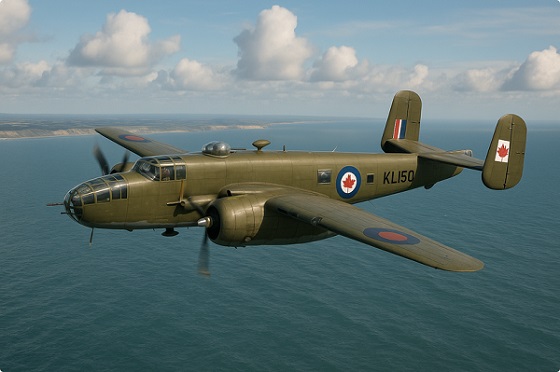
From the Frontier Centre for Public Policy
Sitting inside a B-25 showed me why Remembrance Day isn’t something we can take lightly
Here I was, sitting in the rear gun turret of our Mitchell B-25 bomber, with all my senses on guard and my head on a swivel. The day was clear, the sky could not be bluer, and the danger of enemy fighters coming at us with the sun at their back was almost a certainty.
Luckily, we had just finished our bombing run and were on our way back to base. Our experienced pilot, Major David Rohrer, co-pilot Liam Pearson, and flight engineer Jessica Side had managed to get us to the target unscathed, and we now only had to cross the water to make it home.
Suddenly, Dave had to take evasive action, jerking the plane up and to the right in an almost barrel roll. Cool as cucumbers, the rest of the crew stayed silent as they hung on while I continued to marvel at the incredible manoeuvrability of the B-25.
With 18 machine guns and a full bomb load, the B-25 was a true workhorse. Built in 1945 in Missouri, it showed just how multi-purpose the aircraft could be.
All of this was taking place in Canada last July in the country’s only airworthy B-25 Mitchell, flown out of the Canadian Warplane Heritage Museum in Hamilton, Ontario. The pilot was the museum’s CEO and the crew were volunteers. The target was Niagara Falls, then downtown Toronto (where we flew virtually at the same height as the CN Tower) and the body of water was Lake Ontario..
The experience showed the aircraft’s capabilities, but more importantly, it revealed the challenges faced by Canadian and Allied crews in the Second World War. They worked in noisy, cramped spaces that were too hot in summer and too cold in winter; faced constant danger from enemy aircraft and ground-based flak; dodged fighters and often returned with planes full of holes; flew mission after mission with little rest; and lived with the burden of seeing friends shot down or wounded.
This is what our forefathers went through. This is why we still remember and why we need to continue to honour the generations that came before and who fought for Canada and for our values. The Royal Canadian Air Force was born in 1924, 101 years ago. Its members fought gallantly alongside the Royal Air Force (RAF) and United States Army Air Forces, and many Canadians also flew in RAF and other Commonwealth units.
We owe them a debt that cannot be repaid. All we can do is make sure future generations will remember them, honour them, and stand ready to take their place in the next conflict.
Freedom is not free. It is paid for by the blood of men and women warriors prepared to pick up the torch. Warriors who have no cause except that of freedom, equality, and the protection of all.
As U.S. Army general Douglas MacArthur, who led Allied forces in the Pacific during the Second World War, said, “The soldier above all others prays for peace, for it is the soldier who must suffer and bear the deepest wounds and scars of war.”
This Remembrance Day, and at other times, let us remember and thank those who suffered wounds and scars, but let us also rededicate ourselves to follow their brave example.
Michel Maisonneuve is a retired lieutenant-general who served Canada for 45 years. He is a senior fellow at the Frontier Centre for Public Policy and author of In Defence of Canada: Reflections of a Patriot (2024).
-

 armed forces1 day ago
armed forces1 day agoIt’s time for Canada to remember, the heroes of Kapyong
-

 Daily Caller2 days ago
Daily Caller2 days agoMcKinsey outlook for 2025 sharply adjusts prior projections, predicting fossil fuels will dominate well after 2050
-

 Business2 days ago
Business2 days agoTrump: Americans to receive $2,000 each from tariff revenue
-

 Business1 day ago
Business1 day agoCarney’s Floor-Crossing Campaign. A Media-Staged Bid for Majority Rule That Erodes Democracy While Beijing Hovers
-

 Housing2 days ago
Housing2 days agoTrump advancing 50-year mortgage to help more Americans buy homes
-

 Business19 hours ago
Business19 hours agoLiberals refuse to disclose the amount of taxpayer dollars headed to LGBT projects in foreign countries
-

 Daily Caller11 hours ago
Daily Caller11 hours agoUS Nuclear Bomber Fleet Shares Fence With Trailer Park Linked To Chinese Intel-Tied Fraudster
-
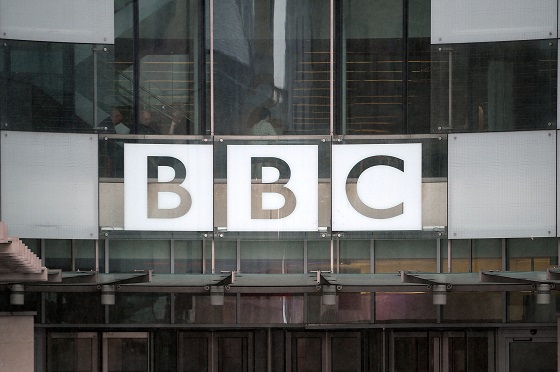
 International2 days ago
International2 days agoBBC boss quits amid scandal over edited Trump footage




